


Salesforce Knowledge Article
Create an Effective Data Strategy
Making sure your data is properly monitored, controlled, and used “Data strategy” seems to be the newest buzz-term swirling around the IT world, and you’ve probably been wondering what exactly it is and if you need to be concerned about it. Technical jargon abounds in this area, and it can be hard to discern exactly what needs to be done and why.
Here, we’re going to take a look at what a data strategy is and how you can create the most effective one for your business.
What is a Data Strategy?
Put simply, a data strategy is how your business controls, monitors and uses the data it creates or has access to. This includes how data is leveraged and used to benefit your business. In order to harness the power of your data, it is important to have a clear and comprehensive data strategy in place. This might sound overwhelming, but there are five basic steps to creating a data strategy.
Each step provide a different layer in the overarching data strategy that is vital to the success of your business. In a world increasingly centered on data, it’s easy for data to turn from an asset into a burden that slows rather than enhances your business operations. By following these five basic steps, you can harness the power of your data and put it to work for you and avoid being bogged down by data that is working against you.
1. Identify and Describe
The first step to harnessing your data is to identify and describe it. In other words, you need to know what kinds of data you have and what it is used for. Additionally, you need to know how the data your business uses is collected and stored. Like a library book, your data needs to be tagged and cataloged with a methodology that enables it to be retrieved quickly and for the right purposes.
Another important consideration at this phase is industry regulations that pertain to your business. If you are subject to regulations, you may want to review the types of data that are being collected and limit data that your business does not need to collect. This can help reduce the footprint that falls under regulation and needs to be closely monitored.
2. Provision and Share
Once data has been cataloged and tagged, it is time to decide who needs access to what. The goal is to provide appropriate access to those who need it without granting too much access to those who don’t. This makes it easier to keep your data under control and prevent it from being exposed to the outside world or competitors.
This stage also establishes which data remains internal and confidential versus that which can be shared with the outside world. Again, if your business is subject to regulations you’ll want to take a close look at this step and ensure you are creating practices that fall in line with the regulations that your business needs to adhere to.
3. Stage and Store
By this point, you know what sorts of data you have and who you want to have access to that data. So, the question becomes this: How do we store the data so that it is accessible to those who need it?
Questions asked at this phase include what type of technology will be used for the data storage and how the storage is to be orchestrated. This phase will typically involve highly technical jargon and solutions, so it is important to keep asking questions that boil the topic down to the basics. This way, answers will make sense to those outside of the technical team.
4. Integrate and Move
After you have decided how you will be storing and accessing the data, the process of integrating and moving the data comes into play. You will need to know how the data will flow through the system and how existing data will be introduced into the new system. This can include determining how downstream systems will acquire access to the data and how the data will be utilized by applications and availability for processing. At this phase, it is important to ask questions about interoperability and future access to the data.
5. Govern and Manage
The final piece to the data strategy puzzle is governance and management. Governance is another huge buzzword in the IT world right now, but it is simply just the process that is used to manage your data on an ongoing basis. It takes into account policies and processes that occur at different levels of the business as they pertain to access to and storage of data.
Management of your data is important to ensure it remains secure and available to those who need it. Business needs shift over time, and access requirements and types of data collected need to shift and align as those changes occur. By having proper governance and management policies and procedures, you can ensure your data continues to meet the needs of your business and aligns with your operations over time.

